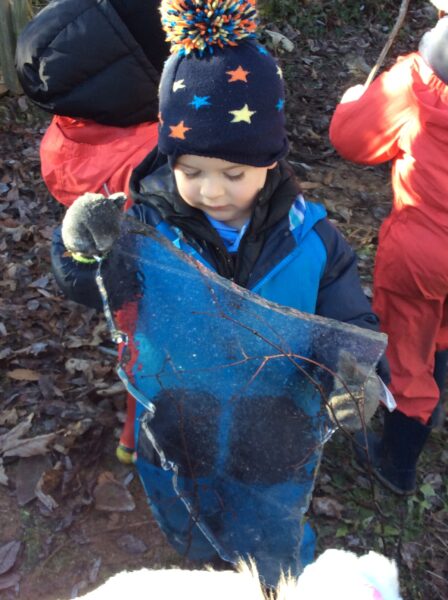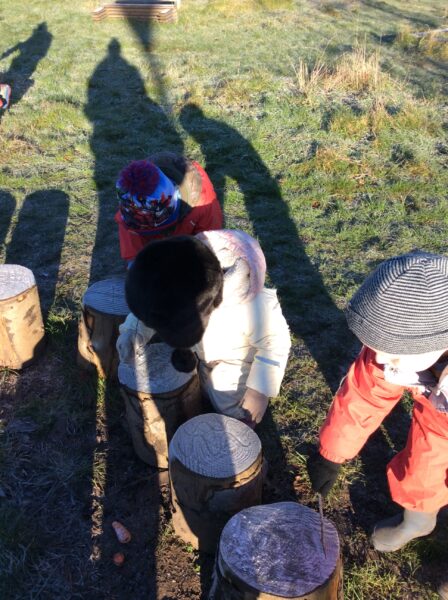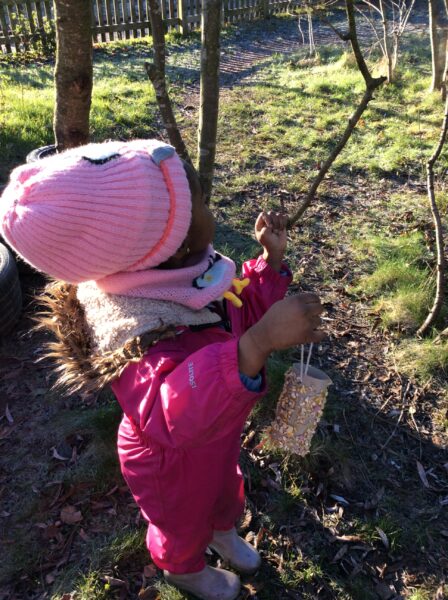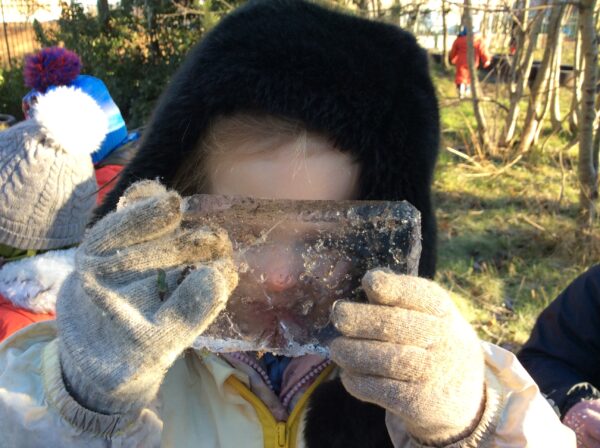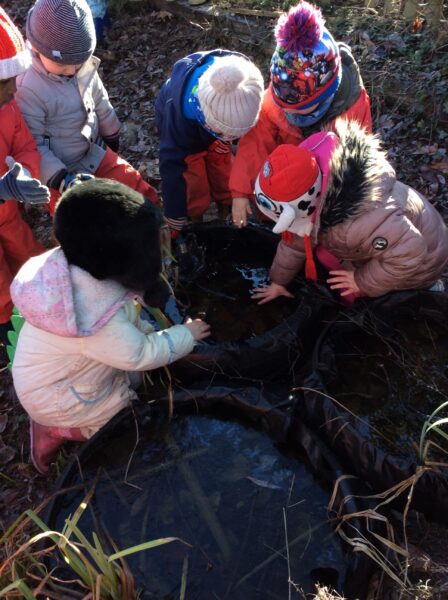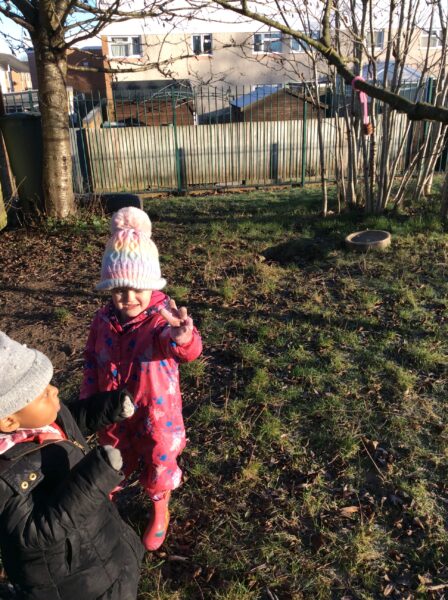Our curriculum takes into account seasonal and natural opportunities that we know children will be fascinated by! We have been learning about the season of winter and spotting signs outside. This topic has been a vehicle for cross-curricular learning; developing children’s understanding of time, making physical marks in the frost to develop our motor skills, developing our knowledge and understanding of the natural world and encouraging us to communicate.
By being immersed in real experiences and enhancing this with poems, songs and books the children have learnt many words and concepts such as, “frost, bare, evergreen, hard, robin, frozen, ice, snow.” Adults encouraged children to use adventurous language too – “That shard of ice looks like a shark’s fin!”
The adults have high expectations of children and have been talking and showing them how some birds migrate to hotter countries in the winter. The children have been feeding the birds in different ways as they know that food is harder to find in the winter. Lacie used her knowledge of three, from our mathematics sessions, to subitise three pieces of cereal left on one of our bird feeders! Octavia and Archie spotted a nest and built another for the birds to lay their eggs in, in the coming spring. (This will make their future learning easier as they make connections to past experiences.)
The shape of the ice fascinated the children and they loved changing the shape by throwing, smashing and crushing the ice! We explored the concept of being trapped too, as there were many natural and some man-made objects stuck in the ice.
We returned at different times of the day and noticed some of the frost had gone. Some children had theories about why this happened and it led us to think about the scientific concept of melting. The children experimented melting the ice with their bodies, including their tongues! This made us think about what ice was made from.

